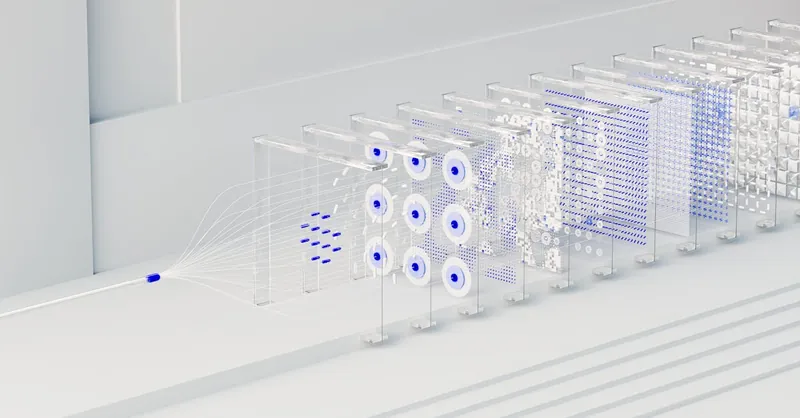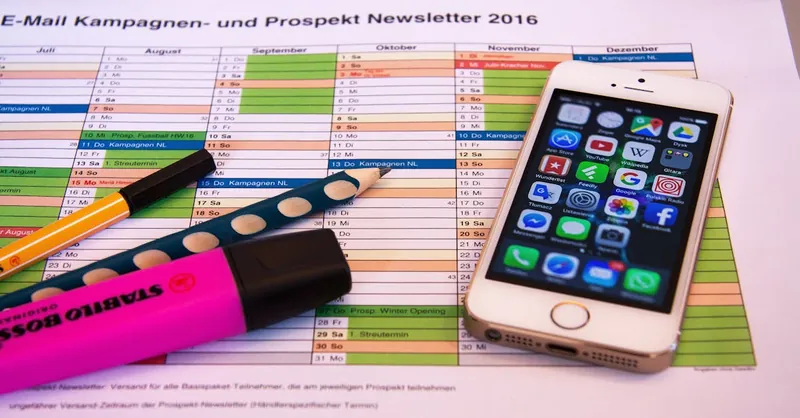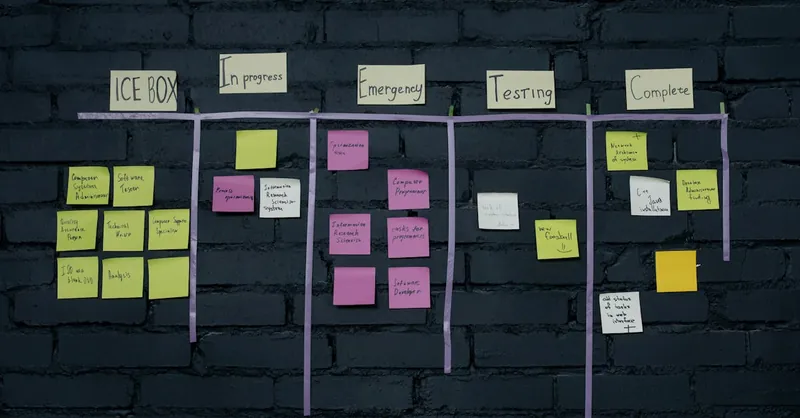Using AI to Prioritize Tasks Effectively: Boost Productivity
Category: Productivity & Automation
Unlock the Power of AI for Task Prioritization
In today’s fast-paced world, professionals, entrepreneurs, and tech enthusiasts are constantly seeking smarter ways to manage their workloads and maximize productivity. If you’ve landed here, you’re likely battling the challenge of juggling multiple tasks and feeling overwhelmed by what to tackle next. You understand the value of prioritization but are frustrated by traditional methods that fall short when faced with complex schedules and competing deadlines.
This post cuts through the noise by focusing exclusively on how Artificial Intelligence can empower you to prioritize tasks more effectively—going beyond simple to-do lists to dynamic, data-driven task management. Unlike generic advice, we dive into practical AI tools, frameworks, and techniques designed for users who already appreciate technology’s transformative potential but want actionable insights to integrate AI seamlessly into their daily workflows.
By exploring AI’s capabilities in analyzing task importance, urgency, dependencies, and even emotional impact, this guide will help you reclaim your time and mental clarity. We understand your pain points: scattered priorities, decision fatigue, and underutilizing valuable AI innovations. Whether you’re managing a solo venture or leading a team, this resource equips you with the knowledge to harness AI’s full potential for task prioritization and productivity enhancement. Read on to transform your task management with cutting-edge AI strategies.
- Unlock the Power of AI for Task Prioritization
- Understanding Task Prioritization: Why Traditional Methods Often Fail
- How AI Analyzes and Ranks Tasks: The Algorithms Behind Smart Prioritization
- Top AI Tools for Task Prioritization: Comprehensive Review of Leading AI-Enabled Apps and Software
- Integrating AI Prioritization with Your Workflow: Practical Steps to Blend AI Tools into Agile, GTD, and Kanban Systems
- Automating Time Management with AI: Optimizing Your Schedule Around Priority Tasks
- Using AI to Manage Dependencies and Deadlines: Techniques AI Uses to Identify Task Dependencies and Help Plan Realistic Timelines
- Boosting Decision-Making with AI Insights: Leveraging AI to Reduce Decision Fatigue and Provide Clear Task Focus
- Addressing Common Concerns: Data Privacy, Accuracy, and Human Oversight in AI-powered Prioritization
- Future Trends: How Emerging AI Technologies Will Further Transform Task Prioritization and Productivity
- Measuring the Impact: Tracking Productivity Improvements through AI-Driven Prioritization Metrics and KPIs
Understanding Task Prioritization: Why Traditional Methods Often Fail
For decades, manual task prioritization techniques like to-do lists, the Eisenhower Matrix, and simple calendar scheduling have been the go-to tools for managing workloads. While helpful at a basic level, these methods often fall short in today’s complex, dynamic work environments where priorities shift rapidly and task variables multiply. The core challenges with traditional prioritization include:
-
Subjectivity and Bias – Human decision-making is naturally prone to biases, such as overvaluing urgent but less important tasks or underestimating the time some tasks require. This leads to inconsistent prioritization and potential burnout.
-
Inability to Process Complex Dependencies – Many projects involve interconnected tasks with dependencies that are difficult to track manually, resulting in overlooked deadlines or misaligned efforts.
-
Static and Rigid Frameworks – Traditional approaches lack adaptability. They don't account for real-time changes in priorities or external factors such as team availability, new information, or shifting business goals.
-
Decision Fatigue and Overwhelm – Constantly choosing what to focus on drains mental energy, reducing overall productivity and increasing stress levels.
These limitations highlight the urgent need for AI-driven task prioritization, which leverages machine learning and data analysis to deliver dynamic, objective, and context-aware management of workloads. AI tools excel in analyzing large volumes of information—such as deadlines, task complexity, resource constraints, and even emotional cues—to generate optimized task sequences that align with overarching goals. By moving beyond manual guesswork, AI empowers professionals to make smarter decisions faster, reduce cognitive load, and maintain focus on what truly moves the needle.
Adopting AI solutions addresses not only the inefficiencies of manual prioritization but also the deeper issues of transparency and scalability in task management. As a result, you gain a powerful ally that continuously evolves your productivity strategies, adapting instantly to new challenges and opportunities in your workflow. In the coming sections, we’ll explore how to integrate these AI capabilities into your daily routine effectively.

Image courtesy of Ivan Samkov
How AI Analyzes and Ranks Tasks: The Algorithms Behind Smart Prioritization
At the core of AI-powered task prioritization are advanced algorithms that assess and rank your tasks based on multiple dynamic factors such as urgency, importance, complexity, and context. These algorithms combine machine learning (ML), natural language processing (NLP), and predictive analytics to provide a comprehensive understanding of your workload, enabling smarter, real-time decision-making.
Machine Learning: Learning Your Work Patterns and Preferences
Machine learning models analyze historical data—such as your past task completions, time spent on different activities, and deadline adherence—to uncover patterns that inform prioritization. By continuously learning from your behavior, AI predicts which tasks you are likely to complete efficiently and which may require more immediate attention. This adaptive learning helps the AI system optimize your daily task lists, balancing workload and preventing bottlenecks or burnout.
Natural Language Processing: Understanding Task Context and Sentiment
NLP algorithms process the textual content of your task descriptions, emails, calendar notes, and messages to extract key info like deadlines, dependencies, and required resources. Beyond simple keyword recognition, NLP can evaluate the tone and urgency implied in communications—detecting, for example, whether a client’s email is marked “urgent” or if a team member flagged a task as critical. This nuanced understanding enables AI to factor in not only objective deadlines but also subtler priority signals embedded in your workflow.
Predictive Analytics: Forecasting Future Workloads and Risks
Predictive analytics leverages historical trends and external data—such as project velocity, team availability, and seasonal workload fluctuations—to forecast how upcoming tasks might impact your schedule. By anticipating potential conflicts, resource constraints, or deadline slippage, AI algorithms proactively adjust task rankings. This forward-looking approach ensures your task prioritization remains agile, accounting for both current urgencies and foreseeable challenges.
Key Factors AI Considers When Prioritizing Tasks
- Urgency and Deadlines: How soon a task needs completion.
- Importance and Impact: The overall effect on goals or business outcomes.
- Task Dependencies: Relationships between tasks and required sequences.
- Estimated Effort and Complexity: Time and resources needed to complete a task.
- Contextual Signals: Emotional tone, stakeholder input, and real-time schedule changes.
By combining these sophisticated AI techniques, task prioritization transforms from a static, manual process into an intelligent, continuously evolving system. This harnesses the power of data-driven insights to help you focus on what truly matters, minimize procrastination, and enhance productivity in an increasingly complex work environment.

Image courtesy of Google DeepMind
Top AI Tools for Task Prioritization: Comprehensive Review of Leading AI-Enabled Apps and Software
Harnessing cutting-edge AI technology to prioritize tasks effectively requires more than just theoretical knowledge—it demands practical tools specifically designed to translate AI insights into actionable task management. The market today offers a variety of AI-powered productivity apps and software that automate task ranking, deadline management, and workload optimization. Below, we explore some of the most popular and feature-rich AI task prioritization solutions that can elevate your workflow:
1. Todoist with AI Smart Schedule
Todoist integrates AI to analyze your upcoming tasks, deadlines, and work habits to automatically suggest optimal times for each task completion. Its Smart Schedule feature learns from your past activity to avoid overloading any single day, balancing urgent and important tasks seamlessly. By leveraging natural language processing (NLP), Todoist allows users to input tasks in a flexible format (e.g., "Finish report by Friday"), with AI parsing dates, priorities, and dependencies intuitively.
2. Microsoft To Do & Outlook AI Integration
Microsoft’s task and email management platforms utilize AI to automate task recommendations, flag important emails, and prioritize follow-ups. Through machine learning, this suite helps users identify critical tasks from sprawling inboxes, suggests the best task sequences based on your calendar, and adapts to shifting deadlines. Integration with Microsoft 365 enhances team collaboration, offering shared priority lists that update dynamically.
3. ClickUp with AI Task Prioritization
ClickUp is a versatile project management platform embedded with AI tools that score tasks according to urgency, complexity, and deadline proximity. Its AI engine evaluates multiple variables—including resource availability and task dependencies—to generate smart priority rankings. ClickUp’s customizable dashboards enable users to visualize high-impact tasks clearly and reallocate resources in real-time, promoting efficient workload distribution.
4. Trello with Butler AI Automation
Trello's Butler automation incorporates AI-driven rules and commands to streamline task prioritization. Users can design workflows where the AI triggers card movements, due date adjustments, and notifications based on task status or external inputs. By automating routine decisions and reprioritizing tasks dynamically, Trello helps reduce manual bottlenecks and improve project momentum.
5. Motion: AI-Powered Time and Task Optimization
Motion uses AI to not only rank tasks but also automatically schedule them into your calendar, taking into account meeting times, deadlines, and personal productivity patterns. Its predictive analytics forecast potential overloads and suggest task shuffling to ensure high-priority items get focused attention. As a comprehensive AI assistant, Motion enables users to reclaim control over chaotic schedules with minimal manual oversight.
Each of these tools exemplifies how AI-driven task prioritization software translates complex data into clear, adaptive action plans. When choosing the right app for your needs, consider factors like integration with your existing tech stack, adaptability to your work style, and the sophistication of its AI algorithms. Embracing these innovations not only boosts personal productivity but also scales team efficiency by delivering data-backed prioritization that continuously evolves alongside your projects and goals.

Image courtesy of Pixabay
Integrating AI Prioritization with Your Workflow: Practical Steps to Blend AI Tools into Agile, GTD, and Kanban Systems
Seamlessly incorporating AI-powered task prioritization into your existing productivity frameworks—whether Agile, Getting Things Done (GTD), or Kanban—can dramatically enhance efficiency by automating decision-making and dynamically adjusting priorities in real time. The key to successful integration lies in aligning AI task insights with the core principles and rituals of your chosen methodology while preserving the flexibility to adapt as projects evolve.
-
Align AI Prioritization with Your Workflow Cadence
In Agile environments, where sprints and iterative planning dominate, AI tools can analyze backlogs and sprint goals to recommend which user stories or tasks deserve immediate focus based on urgency, dependencies, and team capacity. Use AI-generated priority scores during sprint planning meetings to facilitate objective discussions and optimize commitment scopes. For GTD practitioners, AI can automate the “Next Actions” list by parsing task context and deadlines, surfacing the most relevant tasks per your current location, time available, or energy levels. In Kanban systems, AI-powered automation can dynamically reorder cards on boards, flag bottlenecks, and suggest task transfers to balance workload across team members. -
Enhance Contextual Awareness with AI-Driven Insights
Integrating AI means your task prioritization becomes more than a static list; it becomes a context-aware system that blends historical performance data, resource availability, and external factors with structured methodologies. For example, syncing AI tools with project management platforms like Jira (Agile) or Trello (Kanban) enables predictive adjustments when unforeseen delays arise or priorities shift unexpectedly. In GTD, AI can contextualize incoming tasks by scanning emails, messages, and calendars, ensuring the “Inbox” processing step captures true high-impact items, reducing clutter and decision fatigue. -
Automate Routine Prioritization Decisions Without Losing Human Judgment
While AI excels at analyzing complex data and recommending optimized task orders, it should augment—not replace—your judgment. Use AI suggestions as a starting point for daily or weekly reviews, incorporating your intuition, team input, and strategic objectives. Many AI tools offer customizable rules and priority weighting, allowing you to calibrate the system to your unique workflow nuances. For Agile teams, combining AI insights with retrospectives helps continuously refine prioritization models based on real-world outcomes. -
Leverage Integration and Automation Features for Maximum Efficiency
Maximize the benefits by syncing AI prioritization tools with your communication platforms (Slack, Microsoft Teams), calendar apps, and collaboration suites. Automation triggers can update task priority based on real-time events—such as last-minute requests or resource changes—keeping workflows responsive and transparent. Creating seamless pipelines between AI systems and existing tools reduces manual overhead, accelerates task completion, and provides comprehensive analytics for ongoing productivity improvements.
By thoughtfully embedding AI-powered task prioritization within familiar productivity frameworks like Agile, GTD, and Kanban, you unlock a powerful synergy between human expertise and machine intelligence. This fusion not only optimizes individual focus and team alignment but also builds a resilient, adaptive workflow that thrives amidst complexity and rapid change. Embracing these practical integration strategies positions you to leverage AI’s full potential in driving superior task management and sustained productivity gains.

Image courtesy of cottonbro studio
Automating Time Management with AI: Optimizing Your Schedule Around Priority Tasks
One of the most transformative advantages of AI in task prioritization is its ability to automate time management by intelligently optimizing your schedule around the most important tasks and dynamically adjusting as new inputs arrive. Unlike traditional calendar tools that require manual planning and frequent edits, AI-driven time management systems leverage data from your task list, deadlines, meeting patterns, and personal productivity rhythms to create a flexible, priority-focused daily agenda that adapts in real time.
Dynamic Scheduling Based on Real-Time Priorities
AI-powered calendars and schedulers continuously analyze your high-priority tasks, estimated effort levels, and interruptions like meetings or urgent requests to allocate optimal time blocks automatically. When new tasks or unexpected events occur, the AI recalculates your schedule on the fly—rescheduling less urgent activities and suggesting the best time slots for critical work. This dynamic adjustment minimizes context switching and procrastination by ensuring your calendar reflects your true priority hierarchy, not just static time slots.
Key Benefits of AI-Driven Time Optimization
- Maximized Focus on High-Impact Tasks: By aligning your calendar with AI-prioritized task lists, you ensure more uninterrupted time for work that drives meaningful progress.
- Reduced Overbooking and Burnout: AI detects signs of overload and can redistribute tasks to prevent bottlenecks and maintain sustainable productivity levels.
- Personalized Productivity Insights: Adaptive AI learns your peak focus periods and energy fluctuations, tailoring the schedule to when you perform best.
- Seamless Integration with Existing Tools: Many AI time management solutions sync effortlessly with platforms like Google Calendar, Outlook, and project management software to keep your entire workflow cohesive.
By automating time management around AI-prioritized tasks, professionals experience a proactive approach to scheduling—one that anticipates needs rather than reacting to chaos. This not only reduces decision fatigue but also creates a highly responsive task ecosystem where priorities, resources, and deadlines continuously harmonize to maximize productivity every day.

Image courtesy of cottonbro studio
Using AI to Manage Dependencies and Deadlines: Techniques AI Uses to Identify Task Dependencies and Help Plan Realistic Timelines
Efficient task prioritization hinges not only on recognizing individual task urgency but also on understanding task dependencies—the intricate relationships where one task’s completion relies on another. AI excels in mapping these dependencies automatically by analyzing project data, communications, and historical workflows. Through techniques like dependency graph modeling and natural language processing (NLP), AI identifies sequences and prerequisite tasks, preventing bottlenecks and ensuring that critical path activities receive focused attention.
Moreover, AI leverages predictive deadline management by integrating dependency insights with adaptive timeline forecasting. This enables AI to suggest realistic deadlines that account for task complexity, available resources, and potential risks. By simulating multiple scheduling scenarios, AI helps users avoid unrealistic deadlines that cause stress or missed targets, and instead fosters proactive workload distribution.
Key AI capabilities in managing dependencies and deadlines include:
- Automated Detection of Task Relationships: AI scans project plans, emails, and notes to infer which tasks must be completed before others can start, building an accurate dependency network without manual input.
- Dynamic Timeline Adjustment: When delays or changes occur, AI recalculates timelines in real time, re-prioritizing dependent tasks to maintain overall project coherence.
- Critical Path Analysis: AI pinpoints tasks that directly impact project completion dates, enabling you to allocate resources and attention where delays would have the biggest consequences.
- Resource-Aware Scheduling: AI considers team member availability and workload, aligning deadlines with capacity to prevent overcommitment.
- What-if Scenario Simulation: By modeling various disruptions or accelerations, AI provides contingency plans to keep projects on track.
By harnessing these AI-driven techniques, professionals can move beyond simplistic deadline tracking to a holistic, dependency-aware task management approach that improves accuracy, reduces last-minute fire drills, and elevates overall productivity. Incorporating AI’s intelligent understanding of dependencies and timelines empowers you to plan more realistically, execute more smoothly, and achieve goals consistently—even in complex, fast-changing environments.

Image courtesy of Thirdman
Boosting Decision-Making with AI Insights: Leveraging AI to Reduce Decision Fatigue and Provide Clear Task Focus
One of the most significant productivity hurdles professionals face today is decision fatigue—the mental exhaustion that comes from weighing endless options about what to do next. AI-powered task prioritization systems address this challenge by distilling complex task data into clear, data-driven recommendations that streamline your decision-making process. Instead of agonizing over which task deserves immediate attention, AI tools analyze multiple variables such as deadlines, task impact, past performance, and contextual factors to generate concise, prioritized action lists tailored to your unique workflow.
This AI-driven clarity not only reduces cognitive overload but also enhances confidence in your daily focus by eliminating uncertainty. By leveraging predictive analytics, AI anticipates future workload fluctuations and advises adjustments before bottlenecks occur. Additionally, AI insights often integrate visual dashboards and priority scoring, enabling quick evaluation of what truly moves the needle and what can be deferred or delegated. The benefits include:
- Minimized Mental Strain — AI automates the heavy lifting of evaluating competing priorities, freeing up your mental bandwidth for creative and strategic tasks.
- Enhanced Objective Prioritization — Data-driven recommendations reduce biases and impulsive task choices, grounding your workflow in measurable impact and urgency.
- Faster, Smarter Decisions — Instant AI feedback accelerates your ability to pivot and adapt as new information emerges, making your task management truly dynamic.
- Improved Focus and Productivity — With clear priority guidance, you spend more time on high-impact tasks and less time in paralyzing indecision.
Integrating AI insights into task prioritization ultimately transforms your workday into a focused, goal-aligned journey, empowering you to move beyond overwhelm and channel energy into what matters most. By consistently relying on AI’s data-backed guidance, you create a sustainable productivity system that evolves alongside your responsibilities, continuously sharpening your decision-making prowess and maximizing task efficiency.

Image courtesy of Google DeepMind
Addressing Common Concerns: Data Privacy, Accuracy, and Human Oversight in AI-powered Prioritization
As AI-driven task prioritization becomes integral to productivity workflows, it’s essential to address key concerns around data privacy, accuracy, and the role of human oversight to build trust and ensure sustainable adoption. Understanding how AI tools handle your sensitive information, deliver reliable recommendations, and complement—not override—your judgment is crucial for leveraging these technologies effectively and responsibly.
Data Privacy: Safeguarding Sensitive Information in AI Systems
AI prioritization tools process vast amounts of personal and organizational data, including task details, deadlines, communications, and behavioral patterns. To protect your privacy:
- Choose platforms that implement end-to-end encryption and comply with global data protection standards like GDPR or CCPA.
- Review and customize data access permissions to ensure only essential information is shared with AI systems.
- Prefer solutions with transparent data handling policies and local data storage options, minimizing exposure risks from third-party data transfers.
By prioritizing data security, you safeguard your confidential workflows and maintain control over your information while benefiting from AI-enhanced task management.
Accuracy: Ensuring Reliable and Context-Aware AI Recommendations
While AI algorithms continuously improve, accuracy challenges remain—especially in understanding nuanced task contexts or rapidly evolving priorities. To maximize reliability:
- Use AI tools that support customizable models trained on your specific workflow data, increasing relevance of prioritization outputs.
- Regularly validate AI suggestions against your team’s insights and real-world outcomes, refining AI parameters based on feedback.
- Combine AI’s data-driven analysis with contextual factors like sudden shifts in business priorities or personal workload preferences that algorithms might not fully capture.
This balanced approach helps mitigate errors caused by incomplete data or algorithmic biases, ensuring that AI recommendations truly support your productivity goals.
Human Oversight: Preserving Control and Strategic Judgment
AI should serve as an augmentation tool, not a replacement for human decision-making. Maintaining active oversight includes:
- Treating AI-generated priorities as guidance rather than absolute mandates—incorporate your experience, intuition, and team inputs before finalizing task sequences.
- Regularly reviewing AI models and outcomes during planning cycles or retrospectives to identify gaps or biases and adjust accordingly.
- Leveraging built-in controls in AI tools, such as priority weighting sliders and manual overrides, to tailor outputs to your unique demands.
By fostering a collaborative relationship between human expertise and AI intelligence, you create a resilient system that enhances productivity while respecting the complexities of real-world work.
Addressing these concerns head-on ensures that AI-powered task prioritization not only boosts your efficiency but also aligns with ethical, secure, and user-centric principles—paving the way for confident, long-term integration of AI into your productivity arsenal.

Image courtesy of Antoni Shkraba Studio
Future Trends: How Emerging AI Technologies Will Further Transform Task Prioritization and Productivity
As AI continues to evolve at an unprecedented pace, emerging technologies promise to revolutionize task prioritization and productivity in even more profound ways. Looking ahead, next-generation AI innovations will bring heightened personalization, deeper contextual awareness, and seamless integration across complex workflows, empowering professionals to navigate increasingly dynamic work environments with ease and precision.
Hyper-Personalized AI Assistants
Future AI-driven prioritization systems will leverage advanced user profiling and behavioral analytics to create hyper-personalized task management experiences. By integrating data from multiple sources—including biometric inputs, mood tracking, and real-time productivity cues—AI will optimize task sequences not only based on deadlines and importance but also on an individual's cognitive state and energy levels. This level of personalization will drastically reduce burnout and decision fatigue by intelligently scheduling high-focus tasks during peak mental performance periods and automating routine or low-impact activities.
Autonomous Workflow Orchestration
Emerging AI platforms will advance beyond task ranking to fully autonomous workflow orchestration, dynamically coordinating cross-functional teams, resources, and project milestones without constant human intervention. Through integration with IoT devices, enterprise systems, and collaboration platforms, AI will proactively detect workflow bottlenecks, unexpected delays, or changes in business priorities and instantly recalibrate task assignments and timelines. This agility will transform task prioritization from a reactive process into a continuously adaptive system that optimizes productivity at scale.
Enhanced Explainability and Human-AI Collaboration
With AI decisions becoming more complex, future tools will emphasize explainable AI (XAI) to increase transparency and user trust in task prioritization recommendations. Users will benefit from clear insights into why certain tasks are prioritized over others, enabling more informed and confident decision-making. Enhanced explainability will foster smoother collaboration between human judgment and AI intelligence, ensuring that automation supports strategic goals without sacrificing flexibility or oversight.
Integration of AI with Emerging Technologies
Several cutting-edge technologies will converge with AI task prioritization to unlock new productivity frontiers:
- Augmented Reality (AR) and Virtual Reality (VR): Immersive interfaces will visualize complex task dependencies and priority shifts in intuitive, interactive formats.
- Natural Language Generation (NLG): AI will generate actionable summaries, progress reports, and even negotiation suggestions to streamline communication around priorities.
- Federated Learning: Privacy-preserving AI models will enable personalized task optimization without compromising sensitive data, addressing growing concerns around data security.
By embracing these future trends, professionals and organizations will harness AI-powered task prioritization that is not only smarter and faster but also deeply human-centered and resilient. Staying ahead of these transformations positions you to continually unlock new levels of efficiency, adaptability, and strategic focus in an ever-changing productivity landscape.

Image courtesy of Alex P
Measuring the Impact: Tracking Productivity Improvements through AI-Driven Prioritization Metrics and KPIs
To truly harness the power of AI for effective task prioritization, it is essential to measure the tangible impact of AI-driven decisions on your productivity. Without clear metrics and Key Performance Indicators (KPIs), it’s difficult to assess whether AI tools and algorithms are making meaningful improvements or simply automating existing inefficiencies. Implementing a structured system to track performance helps optimize workflows continuously and validates the ROI of AI adoption.
Key Metrics to Monitor for AI-Enhanced Task Prioritization
- Task Completion Rate – Monitor the percentage of tasks completed on or before their AI-suggested priority deadlines. An increasing trend indicates better alignment of effort with high-impact priorities.
- Time Spent on High-Value Activities – Measure the portion of work hours devoted to the most important and urgent tasks identified by AI. Improved ratios signal more effective focus and reduced distraction.
- Reduction in Task Switching – Track interruptions and context switches throughout work periods. AI prioritization aims to minimize these by grouping related or sequential tasks, thereby boosting deep work and flow.
- On-Time Project Delivery – Evaluate deadlines met across projects that benefit from AI-driven scheduling and dependency management. Consistent punctuality reflects improved timeline accuracy and resource allocation.
- Decision Latency – Assess how long it takes to decide the next task after review. AI tools should reduce this latency by providing clear, data-backed priorities instantly.
- User Satisfaction and Trust Scores – Collect qualitative feedback from users regarding the clarity and helpfulness of AI recommendations. User confidence is critical for sustained tool adoption and productivity gains.
Leveraging AI Analytics Dashboards for Continuous Improvement
Most AI-powered task management platforms include integrated analytics dashboards that visualize these KPIs in real time. By regularly reviewing these metrics, individuals and teams can:
- Identify bottlenecks or priority misalignments early.
- Adjust AI weighting parameters to better reflect evolving goals or work styles.
- Detect overloading patterns and redistribute workload proactively.
- Validate which types of tasks benefit most from AI prioritization, enabling strategic focus on optimization efforts.
Conclusion: Data-Driven Refinement Fuels Sustainable Productivity Growth
Incorporating robust metrics into your AI-enabled prioritization strategy transforms productivity from a guesswork-driven endeavor into a measurable, optimizable process. Tracking the right KPIs not only confirms the effectiveness of AI but also uncovers actionable insights to refine algorithms and workflows continuously. This commitment to data-driven improvement ensures that AI remains a dynamic productivity partner, consistently elevating your task management effectiveness amidst changing priorities and growing complexities.

Image courtesy of Negative Space
